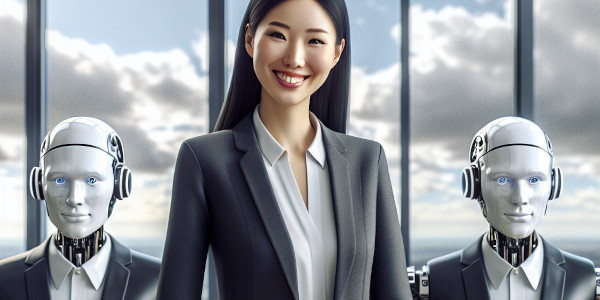
Exploring the Boundaries: Are There Any Limits to What We Can Achieve with GPT?

Exploring the Boundaries: Are There Any Limits to What We Can Achieve with GPT?
I’ve had the opportunity to witness firsthand the innovative strides made in the artificial intelligence domain. A key player in this arena is OpenAI’s Generative Pre-trained Transformer (GPT) models, which have transformed the way we perceive AI’s capabilities. But one question we often grapple with is: “Are there any limits to what we can achieve with GPT?”
Here, I will share five points arguing for the limitless potential of GPT, juxtaposed with five points highlighting its limitations.
The Boundless Potential of GPT:
- Unmatched Language Understanding: GPT models have demonstrated an unparalleled ability to understand and generate human-like text, paving the way for new applications in customer service, content generation, and more.
- Versatility: GPT’s flexibility allows it to be used across various industries, from healthcare and education to finance and entertainment. The possibilities are endless.
- Democratization of AI: GPT’s user-friendly nature makes it accessible to non-technical users, fostering innovation from diverse fields and perspectives.
- Scalability: With GPT, tasks that would have taken humans hours can be accomplished in mere minutes, offering massive scalability potential.
- Integration capabilities: GPT can be integrated with existing legacy systems. This means it can augment and enhance current operations rather than requiring a complete system overhaul. It can work in tandem with established procedures, making it a cost-effective and efficient solution for businesses looking to adopt AI without disrupting their existing infrastructure.
The Inherent Limitations of GPT:
- Quality Control: While GPT can generate high-quality text, it lacks the ability to consistently maintain quality over large volumes of output. This can result in inaccuracies or nonsensical outputs.
- Lack of Contextual Understanding: GPT, though advanced, still struggles with complex contextual understanding and can misunderstand nuances or subtleties in language.
- Ethical Concerns: GPT’s potential misuse in generating misinformation or fake content presents ethical challenges that require constant vigilence.
- Data Bias: GPT models learn from the data they are trained on. If this data is biased, the model will perpetuate these biases, leading to a narrow perspective of the world.
- Cost and Complexity: Despite its potential, GPT is not easy to implement. It requires substantial resources, both in terms of computational power and expertise. That’s why our company, System in Motion, provides training and integration services, to secure the value of AI transformation projects.
Conclusion:
While GPT offers exciting possibilities, it is not without its limitations. It is a tool a powerful one but like any tool, its effectiveness depends on the hands that wield it. As we continue to refine and develop this technology, it’s crucial to understand both its potential and its challenges.
To fully harness the capabilities of GPT, it’s not just about understanding the technology it’s about understanding its implications, nuances, and the ethical dimensions of its use. To this end, training and education become critical. I encourage you to delve deeper into GPT through training and continuous learning. Understanding GPT is not just about leveraging an innovative tool; it’s about shaping the future of AI a future we all have a stake in.
We are Here to Help
At System in Motion, we are committed to building long-term solutions and solid foundations for your Information System. We can help you optimize your Information System, generating value for your business. Contact us for any inquiry.
Let's start and accelerate your digitalization
One project at a time, we can start your digitalization today, by building the foundation of your future strength.
Book a Demo







